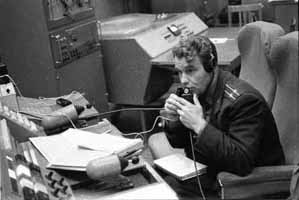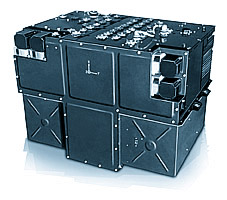|
HUMAN BEING |
ONBOARD COMPUTER |
Advantages |
Disadvantages |
Advantages |
Disadvantages
|
| Capable of reacting to unexpected
events |
Limited channel capacity; that is,
the amount of information processed per time unit is low |
High channel capacity |
High complexity of programs |
| Capable of using temporal and spatial
concepts and to organize pieces of information into an
integrated whole |
Work efficiency diminishes relatively
quickly because of fatigue and distraction of
attention |
Long-lasting work efficiency |
Zero or low capability of
comprehensive evaluation of the situation |
| Familiar with different methods of
performing operations. Capable of using other means, if regular
means fail |
Computing operations are relatively
slow and imprecise |
Computing operations are fast and
precise |
Almost incapable of finding an
alternative solution. In case of failure cannot always resume
work by itself |
Manned space flights have demonstrated that a human being alongside
automatic systems can carry out a sufficiently wide range of tasks
related to spacecraft guidance, equipment control, and other operations.
The cosmonaut can be delegated those spacecraft control functions that
he can perform as successfully as an automatic system that includes an
onboard computer. If the cosmonaut and the computer perform operations
with equal success, then one needs additional data about the
characteristics of the system as a whole, and one may consider various
degrees of the cosmonaut's participation in its functioning.
Some experiments during actual space flights and theoretical
considerations suggest that cosmonauts can perform the following
functions on board a spacecraft:
- control of onboard devices and instruments;
- restoration of malfunctioning onboard systems by replacing failed
parts and doing simple repairs;
- visual monitoring and performing navigation tasks;
- control of spacecraft movement around its center of mass
(orientation and stabilization) and the movement of the center of
mass (maneuvers on the orbit, orbit corrections, landing, rendezvous
and docking);
- assembly and disassembly of various spacecraft components; work
that requires extravehicular activity;
- experiments and analysis of results
Studies of these functions suggest that most of them can be carried
out by an onboard computer. However, the use of manual control not only
increases the reliability of the spacecraft, but also raises cosmonauts'
confidence in the success of these operations.
|

